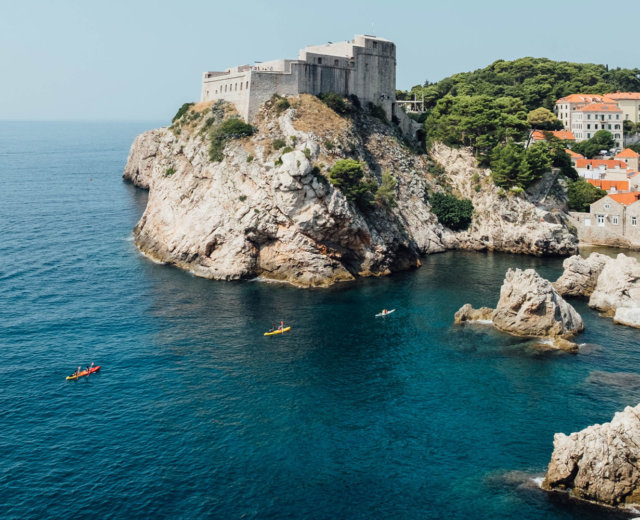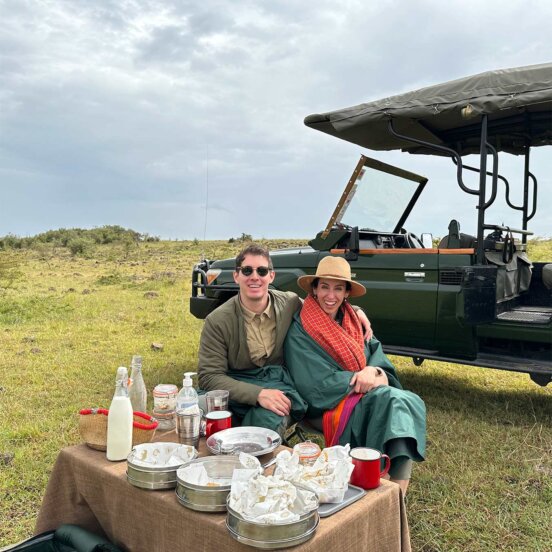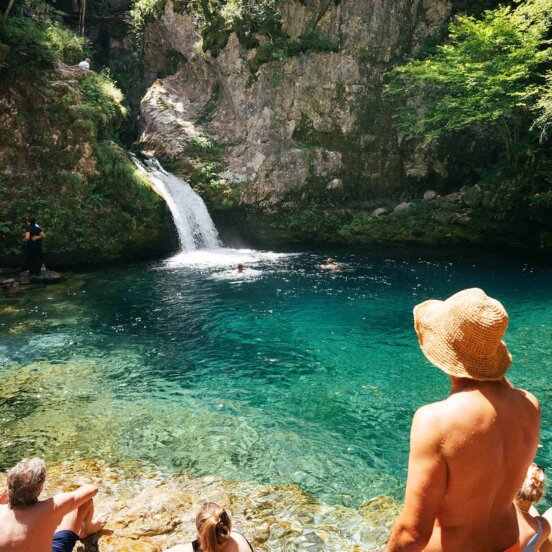Meet the Turkish chef behind Cappadocia’s most-coveted restaurant
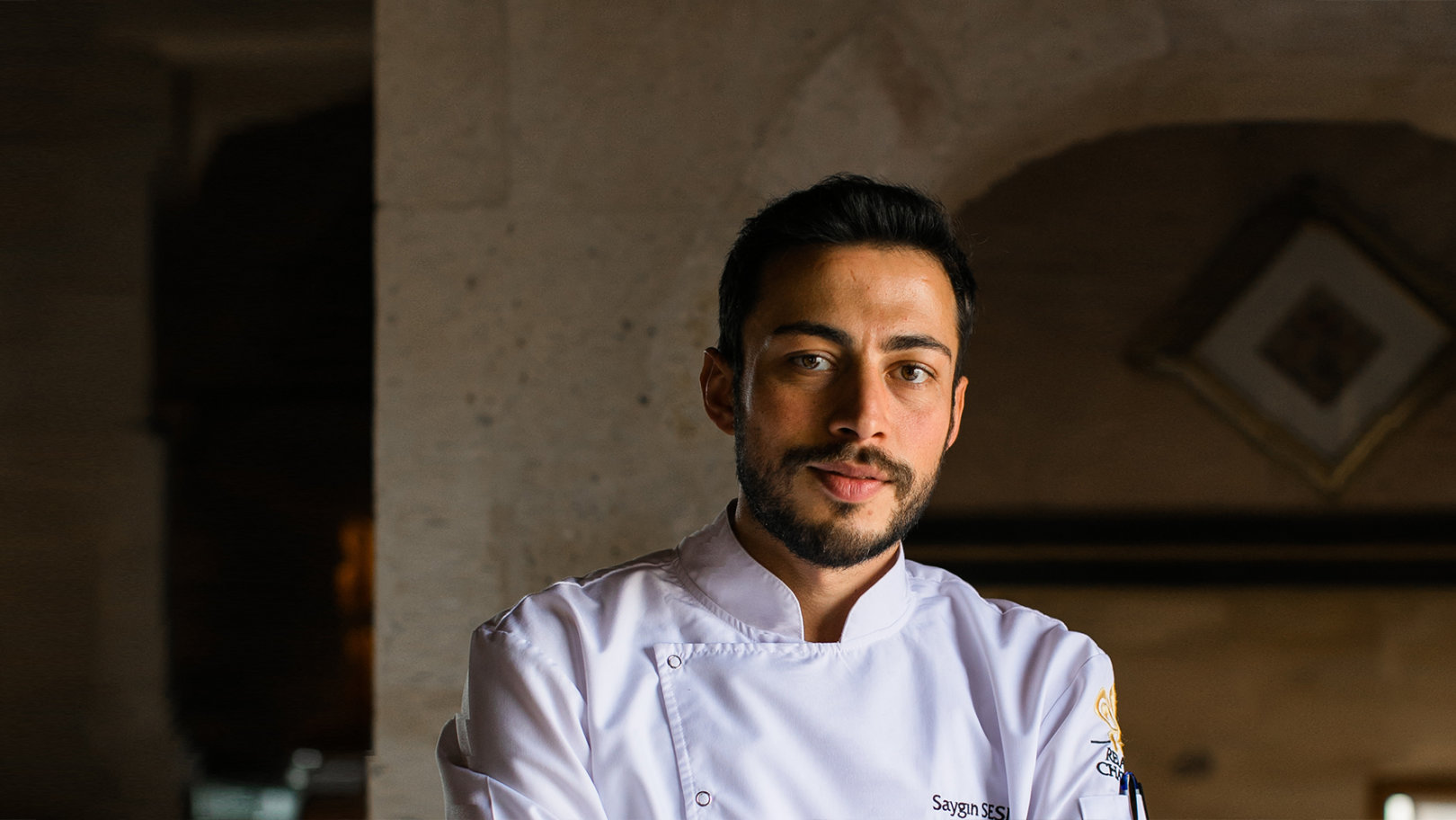
For 35-year-old Turkish chef Saygin Sesli, food is his happy place. As a child on his way back home from school, the aromas wafting out of his mother’s kitchen often left him transfixed. “One of my fondest childhood memories is of licking my mum’s pudding bowl clean with my fingers,” he recalls.
His family hails from Isparta, a city in western Turkey, known for its roses that produce fragrant oil. As his father was in the military, they led an itinerant life, moving every few years. This exposed Saygin to the rich and varied culinary traditions of Turkey, right from his childhood.
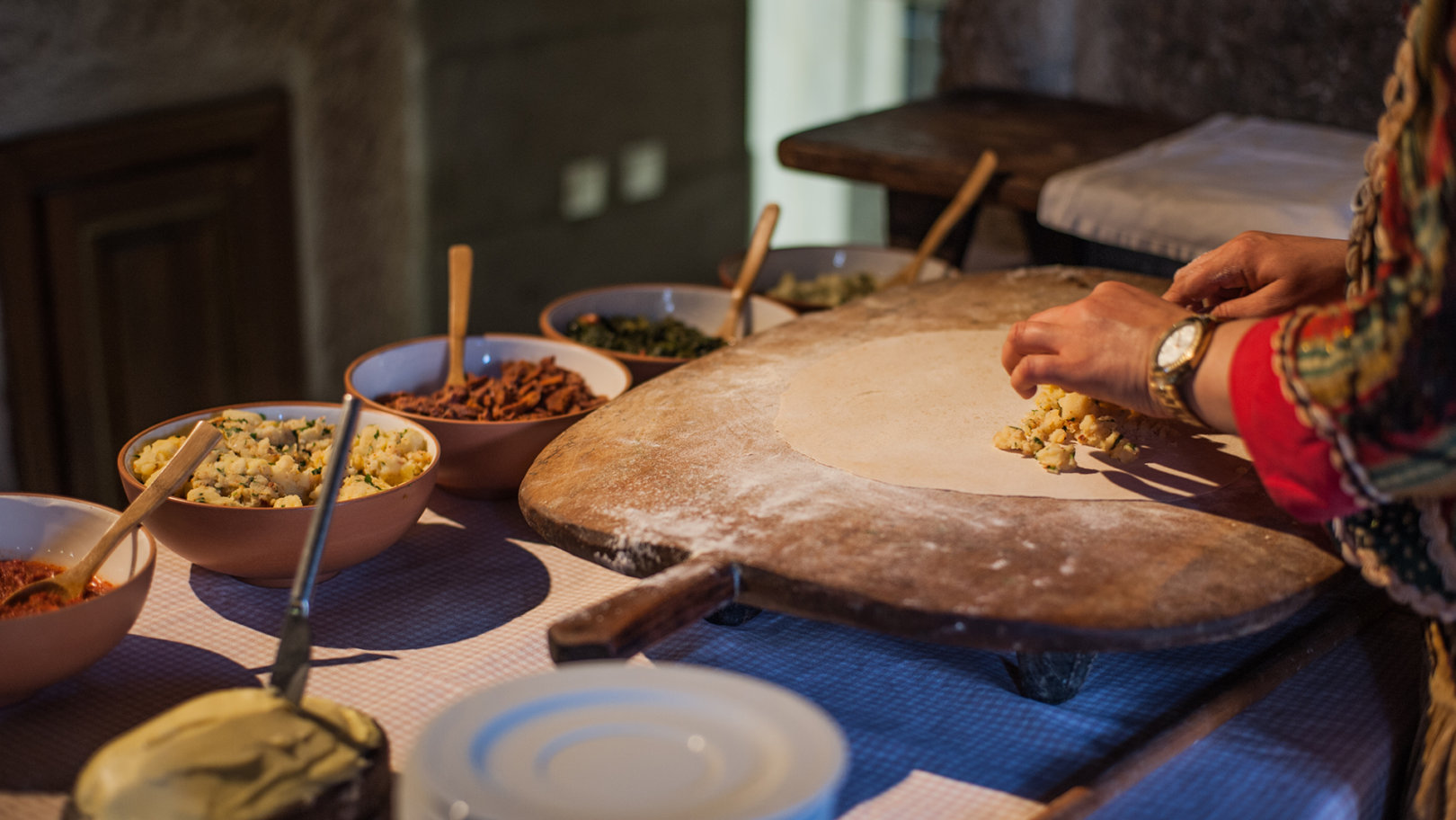
It was his love of food that spurred a career shift
In his second year at college studying finance, he realized that he didn’t want to pursue a career that wasn’t aligned with his passions. Taking a leap of faith, he signed up for a short gastronomy course at the Isparta Applied Science University – and the rest is history.
If it was his love of food that spurred a shift in career, it was love again that later stoked his interest in Anatolian cuisine. Although he had traveled through Cappadocia in the past, it was only after he met his wife (who hails from the region) that he decided to dig deeper into this rich, ancient food culture.
Anatolia straddles the large landmass of Turkey on the Asian side. It’s bound by the Black Sea to the north and the Taurus Mountains to the east and south. Ruled by the Hittites, Romans, Byzantines and Seljuks over the centuries, its cuisine is a reflection of the many influences that have washed over the region.

Cappadocia is a place unlike any other
Within Anatolia, the Cappadocia area especially is a place unlike any other, known for its distinctive “fairy chimneys”: cone-shaped rock formations clustered in Monks Valley, Göreme and beyond.
Geological studies estimate that the region was formed by three volcanic eruptions millions of years ago. Further erosion and numerous earthquakes have created an otherworldly landscape today of honeycombed cliffs, rocky outcrops and valleys – best witnessed on a hot-air balloon ride over the area or by visiting its fantastical cave dwellings and underground cities.
It’s a pretty special place, chef Saygin agrees: “People come to Cappadocia for its history and culture. I was keen to be based here, as I truly believe both the kitchen and the cuisine are part of the culture and heritage of the area,” he says.
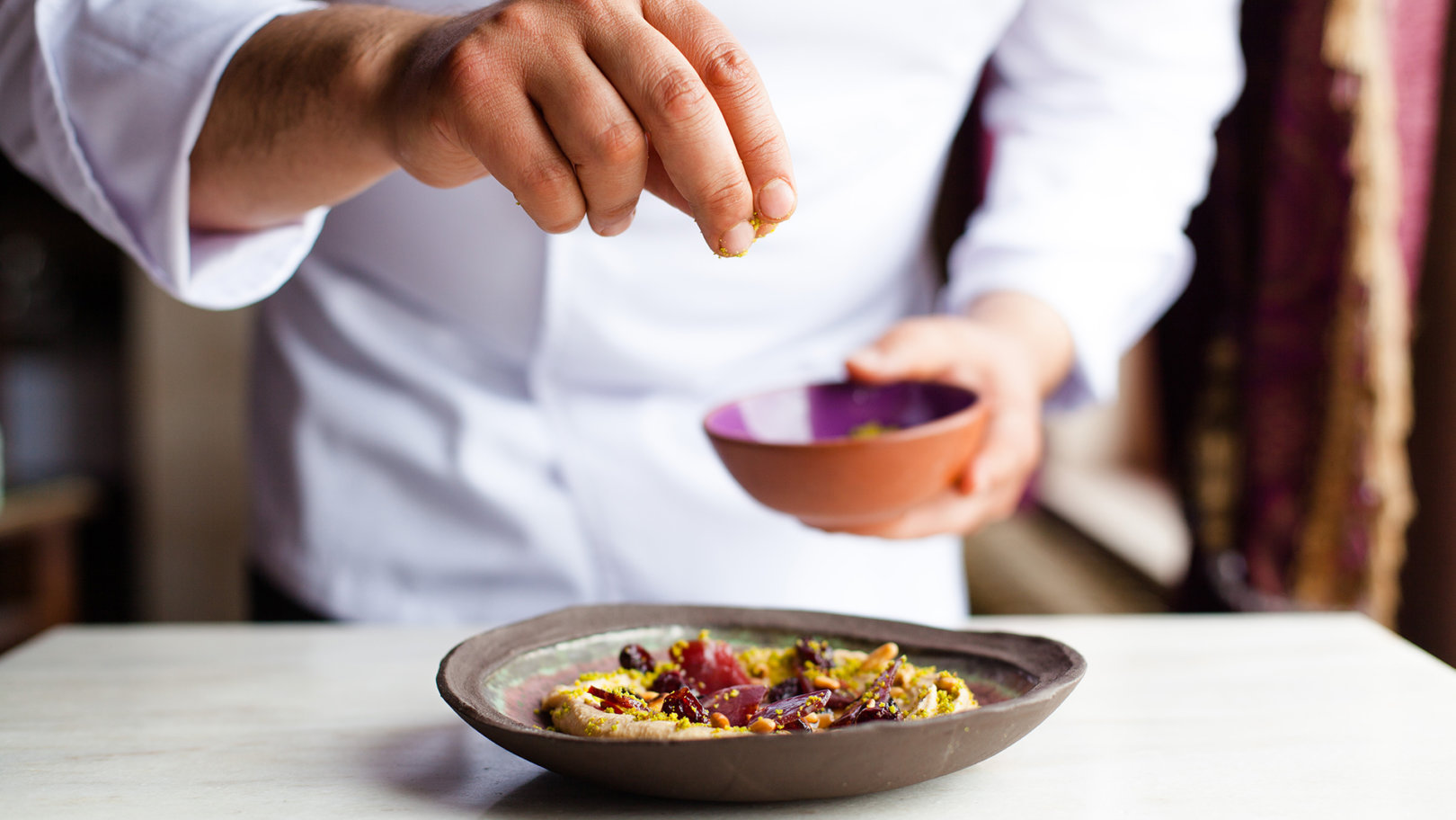
Many local dishes are cooked in region’s clay pots
As part of his research into Anatolian cuisine, Saygin spent hours talking to older people in local villages scattered across the lunar-like landscape, gathering recipes and stories about dishes that are rarely seen outside of these age-old home kitchens.
Now, at the atmospheric Museum Hotel’s Lil’a restaurant, Saygin shares these tales through artfully crafted dishes, featuring some of the region’s finest produce.
As volcanic soil isn’t hugely suited to agriculture, local people have instead favored rearing animals for food since ancient times – hence why meat features prominently in the local diet. Many local dishes are also cooked in clay pots and casseroles, as the region is also known for its pottery.
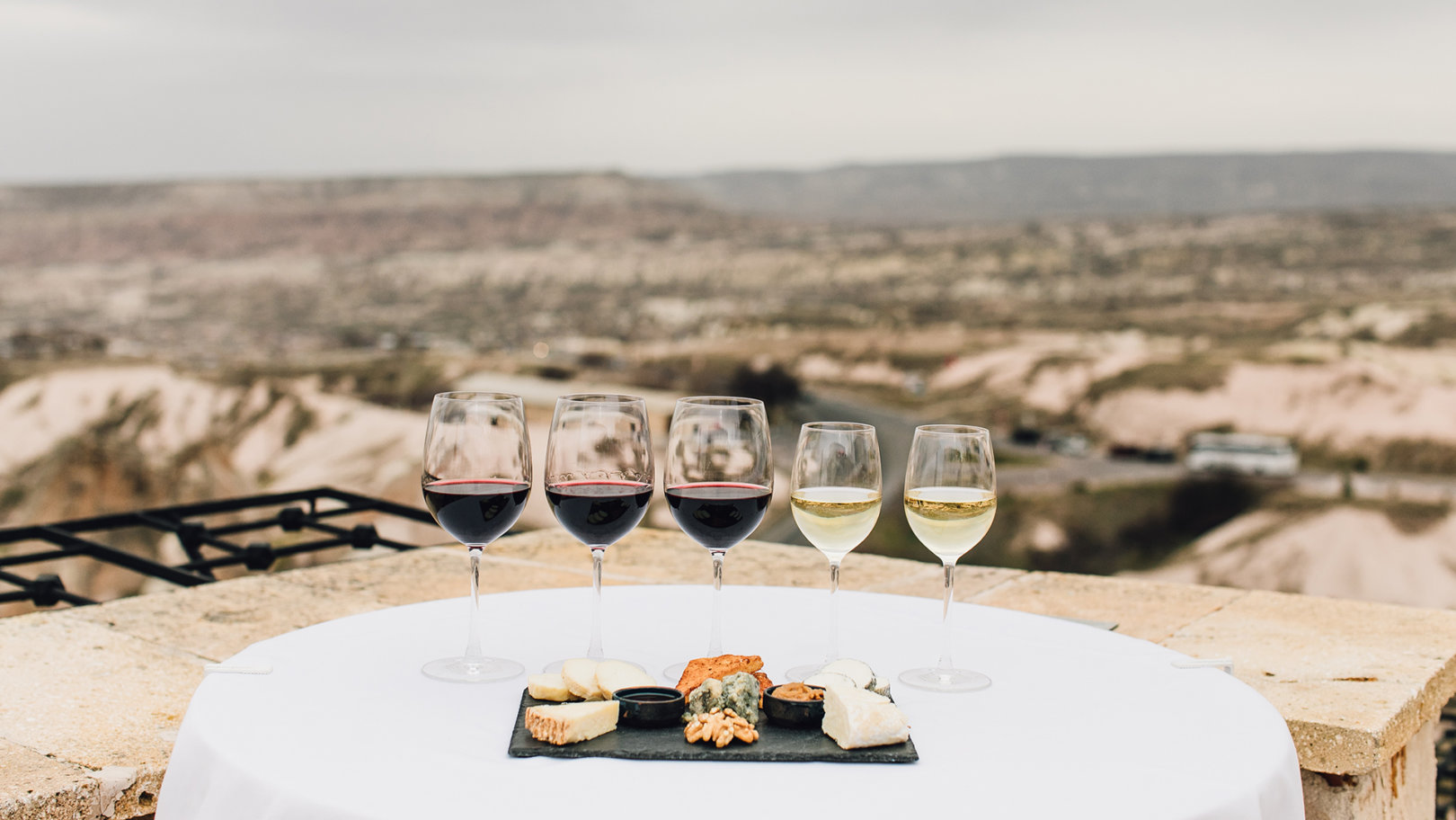
Most of the grape harvest is actually used for table consumption
At Lil’a, all these historical nuances are fused into every dish, including “güveç, which features lamb, local Topaç garlic, pepper and tomatoes cooked as a traditional Avanos casserole in a stone oven for six hours,” enthuses chef Saygin. “It’s served with smoked village yogurt and traditional firik rice,” he adds.
The few vegetables and fruits that are successfully grown here include potatoes, pumpkins and grapes. The Museum Hotel also works with a wider 500-acre network of farms, which provide its kitchen with additional tomatoes, strawberries, eggplant, apricots, peppers and more.
While grapes are, of course, used to produce wine, most of the harvest is actually used for table consumption to make pekmez – or grape molasses – a syrup that’s widely used across Turkey.

Turkey’s grape molasses is featured in his menu
Similar in color to soy sauce, the honey-like syrup was once the sweetener of choice. “In this region, people believe that pekmez has the ability to warm you from the inside. If you drink pekmez, they say you won’t get anemia,” adds Saygin.
Pekmez is an important ingredient of one of Lil’a’s signature desserts, Tatlı Yahni, whose origins can be traced to the Topkapi Palace kitchen in Istanbul. Saygin got his first taste of this simple but exquisite dish at his wife’s 95-year-old great grandmother’s home.
“I loved it the first time I tried it and I knew I had to include it in my menu,” he says. The seemingly simple dish, features apricots, plums, figs and dates stuffed with walnuts, stewed in pekmez. It’s served with a dollop of thick kaymak (clotted cream) that balances the sweetness of the fruits and molasses.
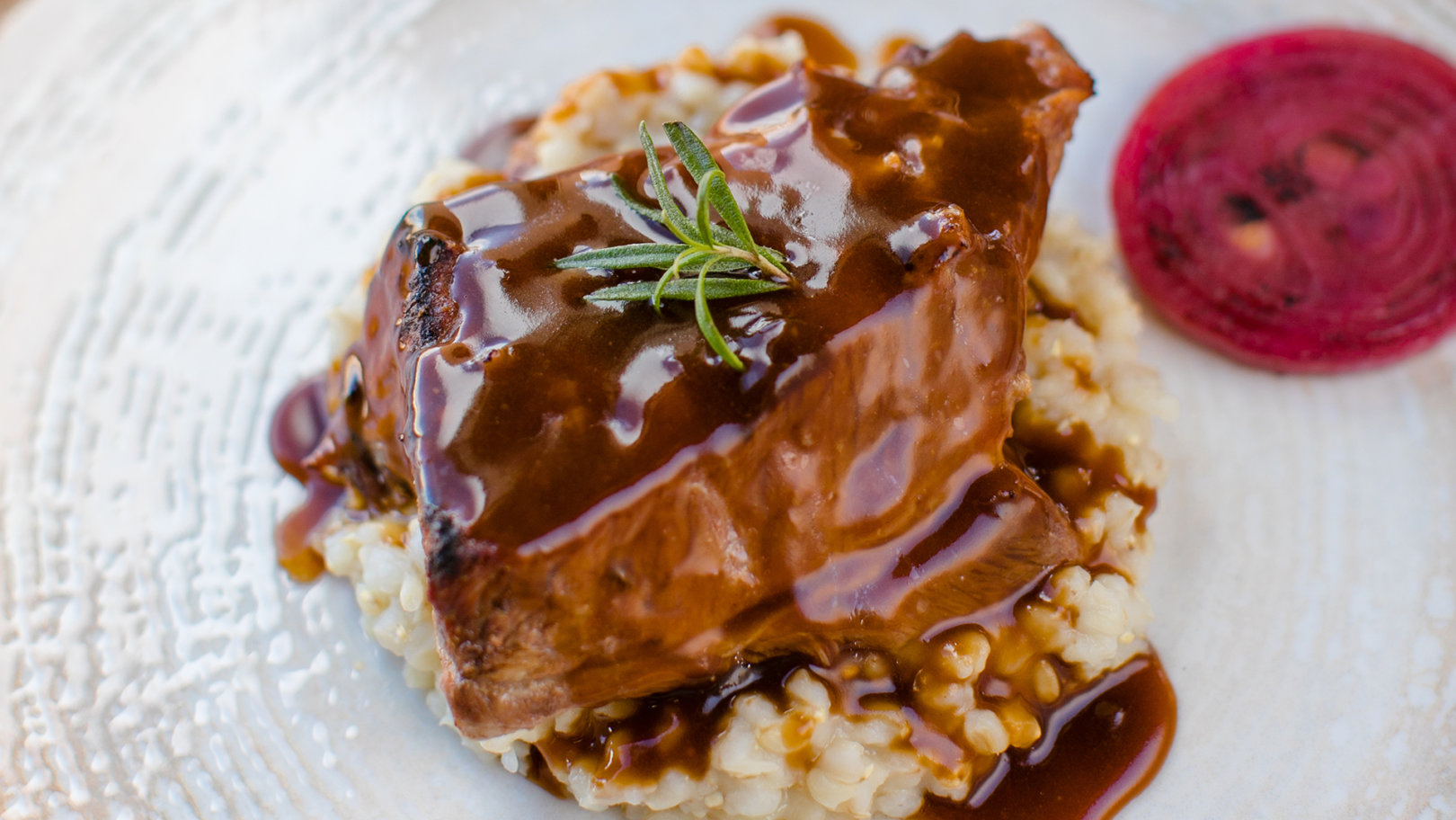
Meat is a firm fixture of the Cappadocian diet
“In winter, this dish is very popular as it’s believed to warm you and give you energy to get through the harsh, cold days. Even today, if you go to elderly people homes, it’s likely that you will be served this dish,” he explains.
Another of Saygin’s favorite dishes, Yaprak Sarma, is made with the young leaves of the grape plant, harvested from the hotel’s associated vineyards in the Love Valley.
“Every year, in the first week of June, we harvest vine leaves of the Narince and Emir plants – two grape varieties unique to Cappadocia. The leaves have to be plucked at a very specific time, usually around sunrise. They are then stuffed with bulgur, rice, meat, tomatoes and spices, cooked in a tandoor and served with tomato sauce and garlic yogurt. It’s a very special Cappadocia flavor,” Saygin adds.
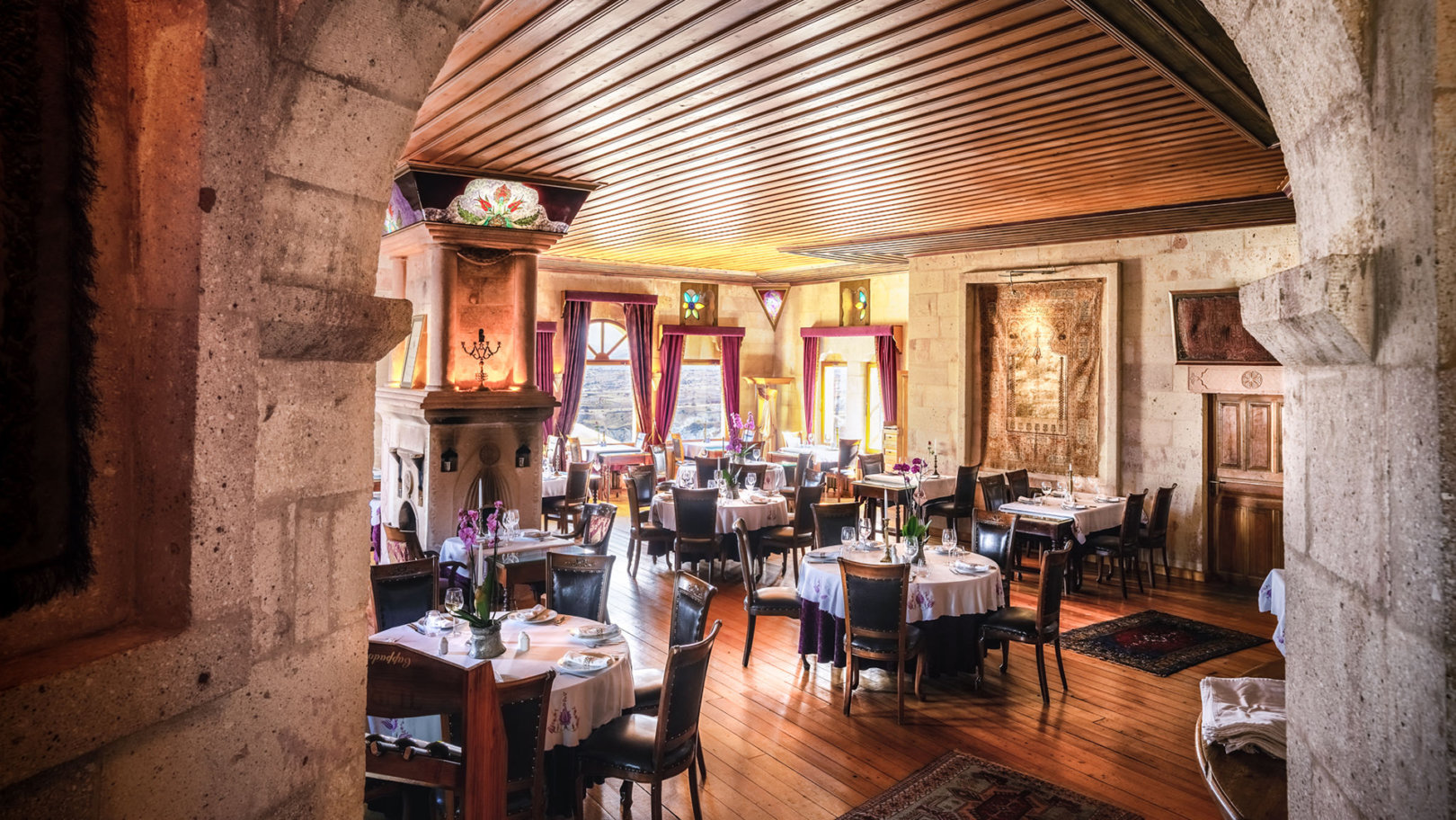
Turkish cuisine is deeper and richer than one thinks
Keeping the focus on Anatolian dishes and local ingredients, Saygin is on a quest to tell the world that Turkish cuisine has a lot more to offer than baklava and kebap.
“Turkish cuisine is deeper and richer than one thinks. Through my food, I want to highlight that.” He certainly seems to be on the right track. Lil’a was named the Best Luxury Hotel Restaurant in Eastern Europe at the World Luxury Restaurant Awards 2020.
But glossy prizes aside, Saygin says: “The biggest reward is seeing the satisfaction on people’s faces after they eat my food”. No doubt it’s the same face he once pulled, after finishing off his mother’s pudding bowls.
Saygin Sesli is the award-winning chef behind Lil’a restaurant in Cappadocia.
To taste the best of Anatolia, join Flash Pack’s week-long Classical Turkey adventure for hot-air balloon rides over Cappadocia and nights spent at smart hotels.

